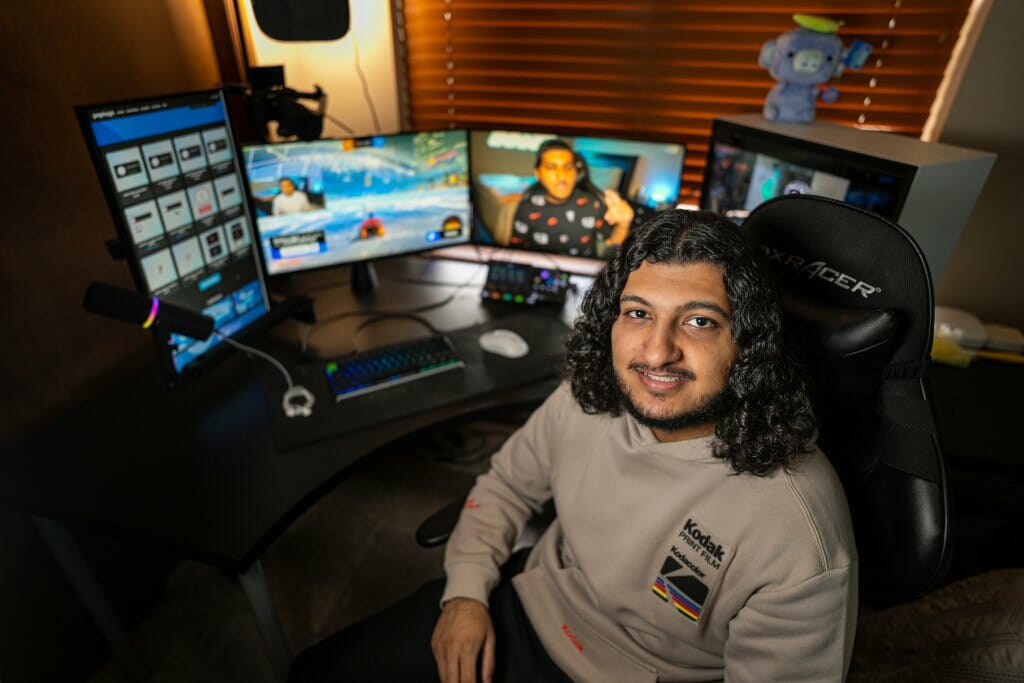
Shakeel foresees a creator economy that may reward YouTube influencers more than film stars or athletes. Andy Manis
Muaaz Shakeel ’19 started watching YouTube videos not long after the platform debuted in 2005, when he wasn’t yet a teenager.
“Dumb comedy videos,” he says. “Silly skits that at the time I thought were hilarious.”
While attending a Madison-area high school, Shakeel had his own YouTube channel. He made a few random videos — “I might review an Xbox controller” — but he mainly subscribed to other YouTubers. Soon, however — first at Madison College and then UW–Madison — Shakeel developed the desire and, most importantly, the discipline to create YouTube content that might draw his own followers. He figured college, where he majored in information systems in the Wisconsin School of Business, might be his last chance to get serious about YouTube before he “got busy with life.
“I wanted to make at least one video a week,” he says. “I stayed very disciplined with that. It didn’t matter if I stayed up until 3 a.m. studying for an exam, I was going to finish my video before I went to sleep.”
Shakeel began by making gaming videos that functioned somewhat like reviews in real time. He didn’t get many subscribers, but those he did often had questions about topics related to editing, streaming, or how to make a thumbnail — a quick snapshot of the video.
“All the things I learned to do,” Shakeel says, “I had to figure out myself. At that time if you looked it up on YouTube, there weren’t tutorials.” He realized there was a gap in the market for informational videos for people who want to become content creators. Shakeel, who goes by Muaaz (rhymes with “pause”) on YouTube, created a channel to fill that void.
“When I started making tutorials,” he says, “my audience numbers started heading upward. I started earning solid revenue while in college.”
Now 25 and living in Madison, Shakeel says that by late 2022 he had 281,000 YouTube subscribers and 39 million video views.
“This is how I make my living,” he says.
Those numbers could be even higher, but for much of 2022 Shakeel didn’t upload new content. He spent time creating an animation store where, he says, “creators can buy pop-up animation to use in a video.”
Looking forward, Shakeel foresees a creator economy that may well reward YouTube influencers more than film stars or athletes. “They have a much stronger connection to their audiences,” he says.
Published in the Summer 2023 issue



Comments
No comments posted yet.